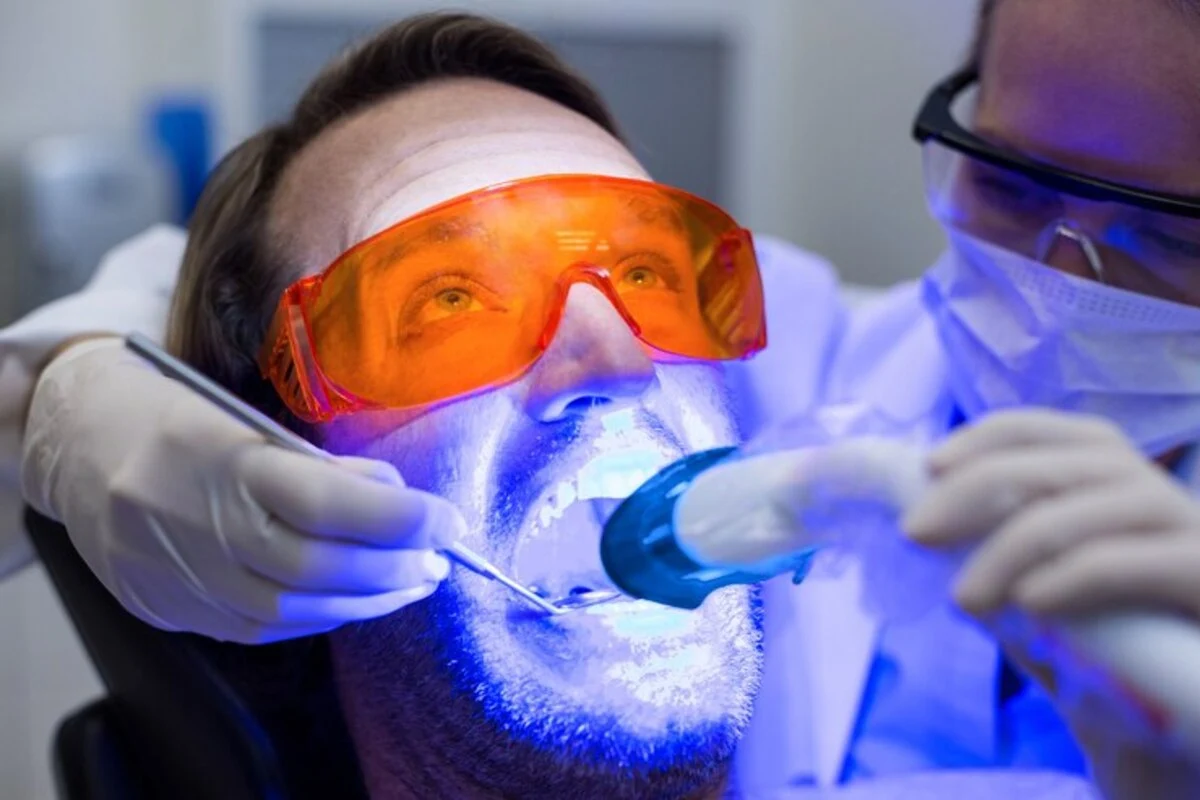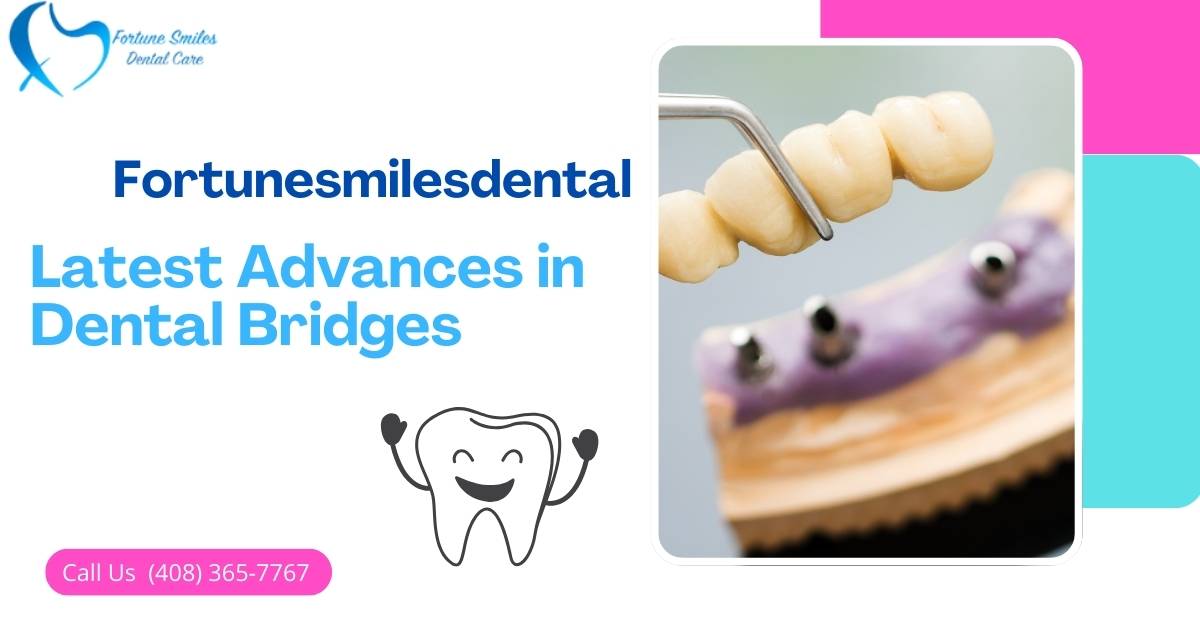Losing a tooth can change more than just your smile. It can affect the way you chew, the way you speak, and even the shape of your face over time. That’s why replacing missing teeth is about much more than cosmetics — it’s about maintaining long-term oral health.
One of the most reliable solutions in restorative dentistry is the dental bridge. For decades, bridges have been used to “bridge the gap” where teeth are missing, restoring both function and aesthetics. Traditionally, this meant crowns on the teeth next to the gap (called abutments) and a false tooth in the middle (called a pontic).
But here’s the exciting part: modern dentistry has transformed dental bridges. Thanks to new materials and advanced technology, today’s bridges look more natural, feel more comfortable, and last longer than ever. In this article, we’ll explore the latest advances in dental bridges, so you can understand your options and feel confident in choosing the best solution for your smile.
Latest Advances in Dental Bridge Materials
Not all dental bridges are created equal. One of the biggest changes in modern restorative dentistry is the improvement in materials. In the past, bridges were often made from metal or porcelain fused to metal. While durable, these options sometimes left a dark line near the gumline or didn’t fully match the natural shine of real teeth.
Read it: Dental Implant Materials
Today, new materials are making dental bridges stronger, longer-lasting, and far more natural-looking:
- Captek with Advanced Gold Technology (AGT)
Captek bridges use a specialized gold compound that offers a unique balance of strength, durability, and aesthetics. Unlike traditional metal-based bridges, AGT is designed to fit more precisely and bond more securely, lowering the risk of decay around the bridge. Plus, the golden inner layer provides a warm, natural undertone that mimics real teeth better than gray metals.
- Zirconia Bridges
Zirconia has quickly become a favorite in modern dentistry. It’s a metal-free, biocompatible material that’s both extremely strong and beautifully translucent. This means zirconia bridges not only last but also blend seamlessly with your natural teeth, even in the front of the mouth where appearance matters most.
- All-Ceramic and Porcelain Bridges
For patients prioritizing aesthetics, all-ceramic or porcelain bridges offer excellent color-matching and a natural luster. These materials are especially popular for front teeth restorations.
- Hybrid Options
Some bridges now combine advanced ceramics with reinforced inner layers for the best of both worlds: strength and aesthetics.
| Material | Then | Now |
|---|---|---|
| Metal / PFM | Strong but not natural-looking; visible dark lines | Still used for back teeth where strength > aesthetics |
| Captek (AGT) | Traditional gold, limited aesthetics | Superior bond, natural color, high biocompatibility |
| Zirconia | Not available | Metal-free, ultra-strong, natural translucency |
| All-Ceramic | Weaker, prone to chipping | Improved strength + excellent aesthetics |
💡 Key Takeaway: Today’s dental bridges are designed to be as close to natural teeth as possible — in strength, feel, and appearance.
Cutting-Edge Technology in Dental Bridge Procedures
The way dental bridges are made and placed has changed dramatically in recent years. Thanks to digital dentistry, patients can now experience faster, more comfortable, and more precise treatments than ever before.
- Digital Impressions
Remember those messy trays filled with gooey impression material? They’re quickly becoming a thing of the past. With handheld intraoral scanners, your dentist can now capture high-resolution 3D images of your teeth in minutes.
- No gagging or discomfort
- Fewer remakes (because the digital models are ultra-accurate)
- Bridges that fit better and last longer
- CAD/CAM Technology
Once your mouth has been scanned, computer-aided design and manufacturing (CAD/CAM) systems take over. These programs create a custom digital model of your bridge, ensuring every curve matches your bite. In some cases, bridges can even be milled and placed in the same appointment — saving you multiple visits.
- 3D Printing in Dentistry
3D printing has become a game-changer for dental restorations. With it, dentists can create:
- Custom bridges that mirror your natural tooth anatomy
- Faster prototypes for testing fit and comfort
- More affordable options by reducing lab time
- Laser Dentistry
Lasers are also being used to prepare gums and abutment teeth with extreme precision. This means:
- Less trauma to the surrounding tissue
- Minimal bleeding
- Faster healing and greater comfort

✨ Patient Experience Boost: Thanks to digital workflows, what once took weeks with multiple appointments can now be done in days — sometimes even a single visit.
Patient Experience – Comfort, Speed, and Aesthetics
For many patients, the biggest concern isn’t the science behind bridges — it’s “what will this feel like for me?” The good news is that the latest dental bridge techniques are designed with patient comfort in mind.
- Comfort Like Never Before
Digital impressions mean no messy molds, and laser-assisted prep reduces gum irritation. Most patients report that today’s procedures feel far smoother than what they may have experienced years ago.
One of my own patients recently told me she was nervous before getting her bridge, expecting the old-fashioned impression trays. When we scanned her teeth with our digital wand, she laughed in relief and said, “That’s it? I wish I’d known it would be this easy!”
- Faster Turnaround
With CAD/CAM and 3D printing, your new bridge can often be designed and delivered in a single appointment or just a few days — a process that used to take weeks. That means fewer dental visits and less time off work.
- A Natural-Looking Smile
Gone are the days of bulky, dark-lined bridges. Modern zirconia and ceramic materials reflect light like natural enamel, making your new bridge blend seamlessly with your surrounding teeth. Many patients say even close family members can’t tell which tooth is the bridge.
✅ Key Takeaway: Modern dental bridges aren’t just about replacing teeth — they’re about restoring confidence, comfort, and a smile that looks and feels natural.
3D Printing for Custom Solutions
3D printing technology has emerged as a game-changer in dental bridge procedures. Its ability to produce custom dental implants and bridges tailored to the unique contours of a patient’s mouth ensures a perfect fit and natural appearance. This precision significantly improves the functionality and longevity of dental bridges, making them more comfortable and effective than ever before.
The rapid prototyping capabilities of 3D printers also mean that patients can receive their custom bridges much faster, reducing wait times and the number of dental visits required.
Read it: Advances in Dental Crown Techniques
Cost and Longevity of Modern Dental Bridges
When patients consider a dental bridge, two of the most common questions I hear are:
“How long will it last?” and “How much will it cost?”
The answers depend on the materials used, your oral health, and how well you care for your teeth.
How Long Do Modern Dental Bridges Last?
- Traditional bridges: usually last 10–15 years with good care.
- Modern zirconia and Captek bridges: often last 15–20 years or more, thanks to stronger, more biocompatible materials.
- With excellent hygiene and regular checkups, some patients keep their bridges for 25+ years.
💡 A key factor in longevity is how well the supporting teeth and gums are maintained. Regular flossing, brushing, and dental visits make a huge difference.
Cost of Dental Bridges
The cost of a bridge varies depending on:
- Type of material (zirconia vs porcelain-fused-to-metal vs Captek gold)
- Number of teeth being replaced
- Technology used (CAD/CAM, 3D printing, etc.)
On average, in the U.S.:
- Single-unit traditional bridges: $2,000–$5,000
- Zirconia or Captek bridges: slightly higher but offer better aesthetics and durability
- Insurance coverage: Many plans cover part of the cost since bridges are considered restorative care.

🔹 Bridges vs. Implants: Cost & Longevity
| Option | Average Cost | Longevity | Best For |
|---|---|---|---|
| Dental Bridge | $2,000–$5,000 | 10–20+ years | Patients missing 1–2 teeth with healthy neighbors |
| Dental Implant | $3,500–$6,000 per tooth | 20+ years to lifetime | Patients seeking long-term, independent replacement |
Conclusion: The Future of Dental Bridges
Dental bridges have come a long way from the bulky, metal-based restorations of the past. Today, with innovations like zirconia, Captek’s Advanced Gold Technology, 3D printing, and digital workflows, bridges are more durable, comfortable, and natural-looking than ever before.
For patients, this means fewer visits, faster results, and a smile that not only restores function but also feels and looks like the real thing. Whether you’re replacing a single missing tooth or multiple, the latest advances in dental bridges are designed with one goal in mind: to help you regain confidence in your smile while protecting your long-term oral health.
At FortuneSmilesDental, we’re proud to offer these advanced solutions — combining cutting-edge technology with compassionate, patient-centered care.
✨ Ready to restore your smile? Schedule a consultation at FortuneSmilesDental today and discover how the latest advances in dental bridges can give you a healthier, more confident smile.

